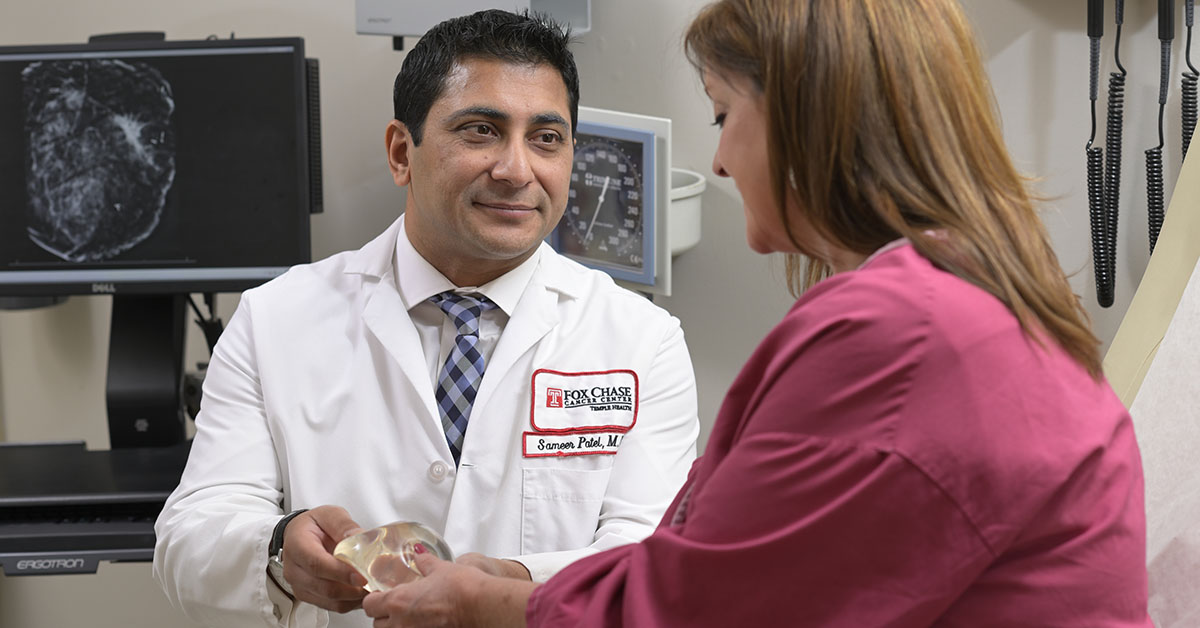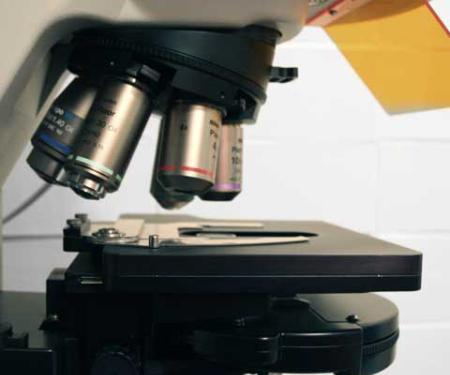
Breast reconstruction is surgery to rebuild and help restore the look of a natural breast. At Fox Chase Cancer Center, we offer a full range of breast reconstruction options, giving you more choices following breast cancer surgery. This expertise includes microvascular and muscle-sparing procedures and advanced techniques that use your own abdominal tissue.
Our reconstructive surgeons are board-certified in plastic surgery and specialize in restoring appearance and function for patients with breast cancer. Your reconstructive surgeon will work closely with your breast cancer surgeon and treatment team at Fox Chase to give you the best possible outcome.
Reconstructive Options
Flap procedures use your own tissue to create a natural-looking breast. Fox Chase experts are skilled in performing several types of flap procedures, including the free TRAM flap and DIEP flap. Both use abdominal tissue.
For women who choose breast reconstruction with implants, Fox Chase offers both saline and silicone gel implants. Implants are inserted with a tissue expander. A new technique using AlloDerm, a processed skin product, allows for faster expansion and stable implant coverage, which shortens the reconstruction process for implants.
Fox Chase surgeons have extensive experience with TRAM (transverse rectus abdominus myocutaneous) flap procedures, including pedicled TRAM or free tissue transfer, as well as other types of tissue reconstructions tailored to suit each patient's specific body build.
Is Breast Reconstruction Right for Me?
The choice to have breast reconstruction is a personal one. Some women choose reconstructive surgery to re-establish breast symmetry, to regain normal breast contour, or to eliminate the need for a breast prosthesis (artificial breast form).
Most women who have had a mastectomy are candidates for breast reconstruction. Women who have had a lumpectomy in which only a segment of the breast is removed usually do not need reconstructive surgery. After considering your overall health and other personal factors, such as the stage of your breast cancer, age, lifestyle, body type and goals, your surgeon will discuss the risks and benefits of your reconstructive options.
Health insurance policies often cover most or all of the cost of reconstruction after a mastectomy. Check your policy to make sure you are covered, and determine whether there are limits on the types of reconstruction covered.
The Reconstruction Process
Reconstruction usually is completed in multiple stages. The first stage involves creation of the breast mound and is usually done in a hospital. Follow-up procedures are commonly done on an outpatient basis but may also take place in the hospital depending on the extent of surgery needed and the preference of your surgeon.
Follow-up procedures usually include exchanging expanders for implants and reconstruction of the nipple and areola (the darker area surrounding the nipple). Less common are procedures to reshape the remaining breast to make it symmetrical with the reconstructed one or to address complications that may arise after surgery.
Years later, it may be necessary to replace implants. Breast implants usually don't last a lifetime, as there can be scarring around them.
When to Have Breast Reconstruction
Breast reconstruction can be done either at the time of the mastectomy (immediate reconstruction) or months or years later (delayed reconstruction), depending on your preference and treatment options.
In general, reconstruction results are better when done at the time of the mastectomy. This is because the skin and other soft tissues surrounding the area haven't tightened and scarred. Delaying surgery may be recommended, however, when radiation therapy is necessary after a mastectomy.
The results of surgery vary. The desired result with breast reconstruction is improvement, not perfection. While breast reconstruction restores the shape of the breast, it does not restore normal breast or nipple sensation. You should openly discuss your expectations and all possible outcomes with your doctor when considering breast reconstruction.
It may be recommended to have surgery on the remaining breast to reshape it to match the reconstructed breast. For women with a breast cancer diagnosis, reconstructive surgery on the opposite breast is covered by insurance as mandated by federal law.
Women who've had a unilateral mastectomy (one breast removed) should continue to have regular mammograms on the opposite breast. Generally, there is no radiographic follow up for a reconstructed breast because there is no remaining breast tissue. If the cancer returns, it would be felt on the chest wall.
Questions For Your Doctor
After a breast cancer diagnosis, it's never too early to discuss breast reconstruction with your doctor or surgeon. You may want to ask these questions as part of this discussion:
- Am I a candidate for breast reconstruction? Which type of surgery would give me the best results?
- What are my options if I choose to have breast reconstruction? Are there any new reconstruction options that I should know about?
- How much experience do you have with different reconstructive procedures?
- When do you recommend I begin breast reconstruction?
- How long will the surgery take? What kind of anesthesia will be used?
- How many surgeries will I need?
- What risks/possible complications should I know about? How long will my recovery take?
- How much discomfort or pain will I feel? Where will the scars be, and how large will they be?
- When can I return to my normal activities, such as driving and working? What activities should I avoid?
- What complications should I report to you?
- What type of care will I need to do at home?
- How often will I follow up with you?
- Will flap surgery cause any permanent changes where tissue was removed?
- What is the latest information about the safety of breast implants?
- How long will an implant last?
- Can I talk with other women who have had the same surgery I am considering?
- Will the reconstructed breast match my remaining breast in size?
- How will my reconstructed breast feel to the touch? Will I have any feeling in my reconstructed breast or nipple?
- Will breast reconstruction interfere with or be affected by chemotherapy or radiation therapy?
- What kinds of changes to the breast can I expect over time? How will aging or gaining/losing weight affect my reconstructed breast?
- How much will it cost? Will my health insurance pay for breast reconstruction? Will my insurance pay for revision, or minor changes, to achieve symmetry?


